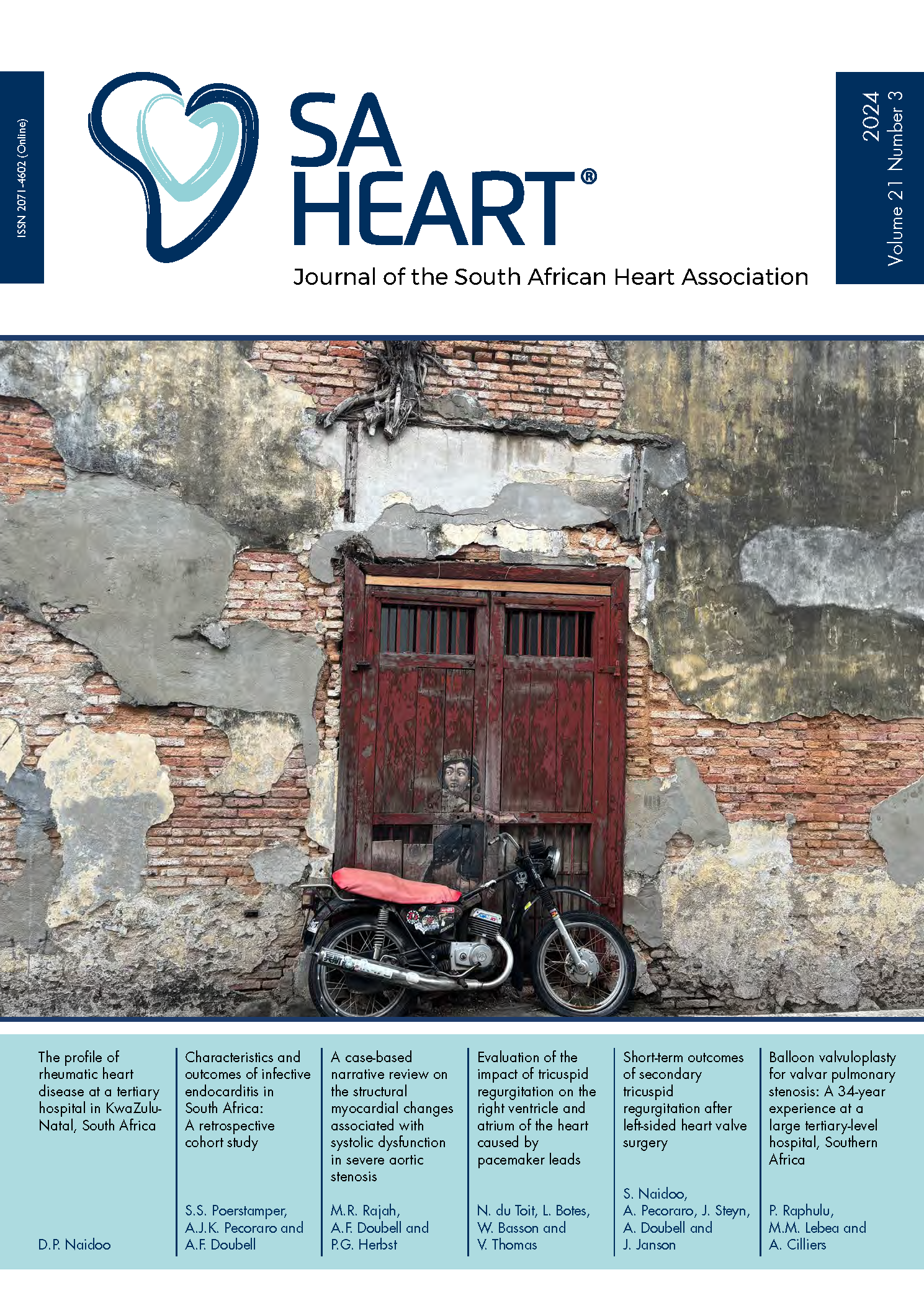Balloon valvuloplasty for valvar pulmonary stenosis: A 34-year experience at a large tertiary-level hospital, Southern Africa
DOI:
https://doi.org/10.24170/21-3-6751Abstract
Background: Congenital pulmonary valve stenosis (PS) is one of the most common congenital cardiac defects, accounting for 8 – 12% of all congenital cardiac defects. Percutaneous balloon pulmonary valvuloplasty (PBPV) has been the preferred treatment since its introduction in 1982.
Aim: To evaluate the efficacy and safety of PBPV over the last 3 decades at a single institution.
Method: A retrospective, descriptive analysis was conducted at a tertiary-level hospital in Southern Africa to evaluate patients who underwent PBPV between 1985 and 2019.
Results: During the study period, 68 patients underwent balloon valvuloplasty for moderate to severe pulmonary stenosis. Patients were selected using echocardiographic criteria. The mean pulmonary valve annulus measured on angiography was 11.2mm (SD 3.9) with a mean balloon size of 13.1mm (SD 4.4). The balloon size to pulmonary valve annulus ratio was 1.169:1. The median peak instantaneous gradient (PIG) before balloon valvuloplasty was 79mmHg (IQR 64 - 102mmHg) which decreased to 33mmHg (IQR 23 - 40mmHg) after balloon valvuloplasty (p<0.001). There was an 88% success rate. Complications occurred in 8/68 (11.7%) patients, with 1 procedural death reported.
Conclusion: Our study shows that PBPV is a safe and effective treatment of moderate and severe PS with a good outcome. Complications are rare if the procedure is well planned and managed promptly if they arise.
Downloads
Downloads
Published
How to Cite
Issue
Section
License
This journal is an open access journal, and the authors and journal should be properly acknowledged, when works are cited.
Authors may use the publishers version for teaching purposes, in books, theses, dissertations, conferences and conference papers.
A copy of the authors’ publishers version may also be hosted on the following websites:
- Non-commercial personal homepage or blog.
- Institutional webpage.
- Authors Institutional Repository.
The following notice should accompany such a posting on the website: “This is an electronic version of an article published in SAHJ, Volume XXX, number XXX, pages XXX–XXX”, DOI. Authors should also supply a hyperlink to the original paper or indicate where the original paper (http://www.journals.ac.za/index.php/SAHJ) may be found.
Authors publishers version, affiliated with the Stellenbosch University will be automatically deposited in the University’s’ Institutional Repository SUNScholar.
Articles as a whole, may not be re-published with another journal.
Copyright Holder: SA Heart Journal
The following license applies:
Attribution CC BY-NC-ND 4.0

